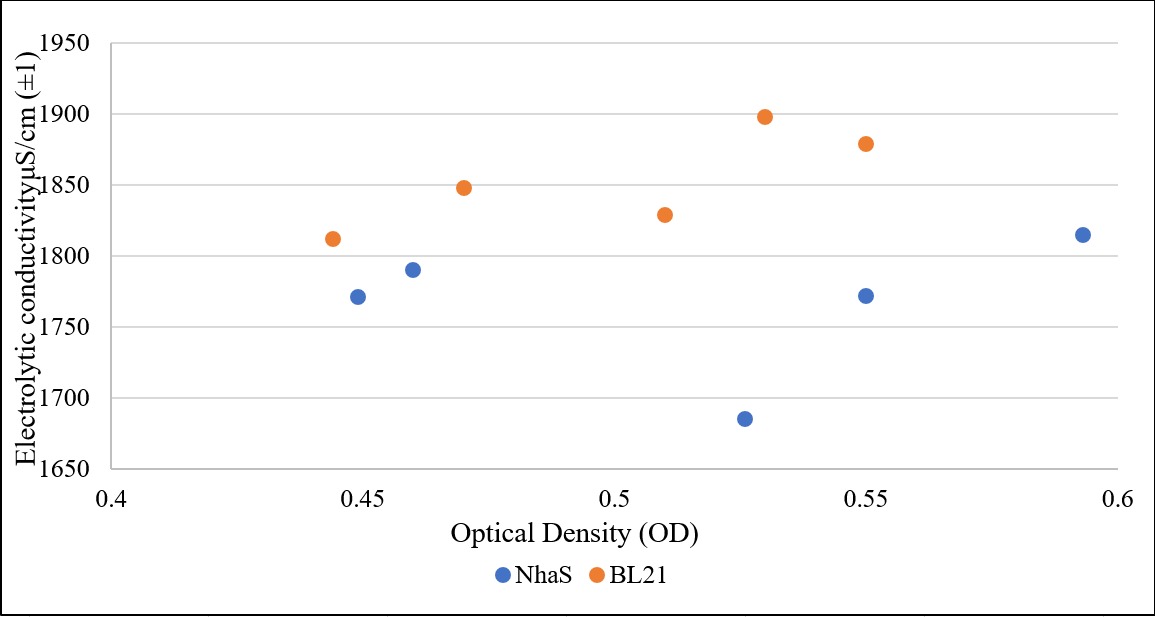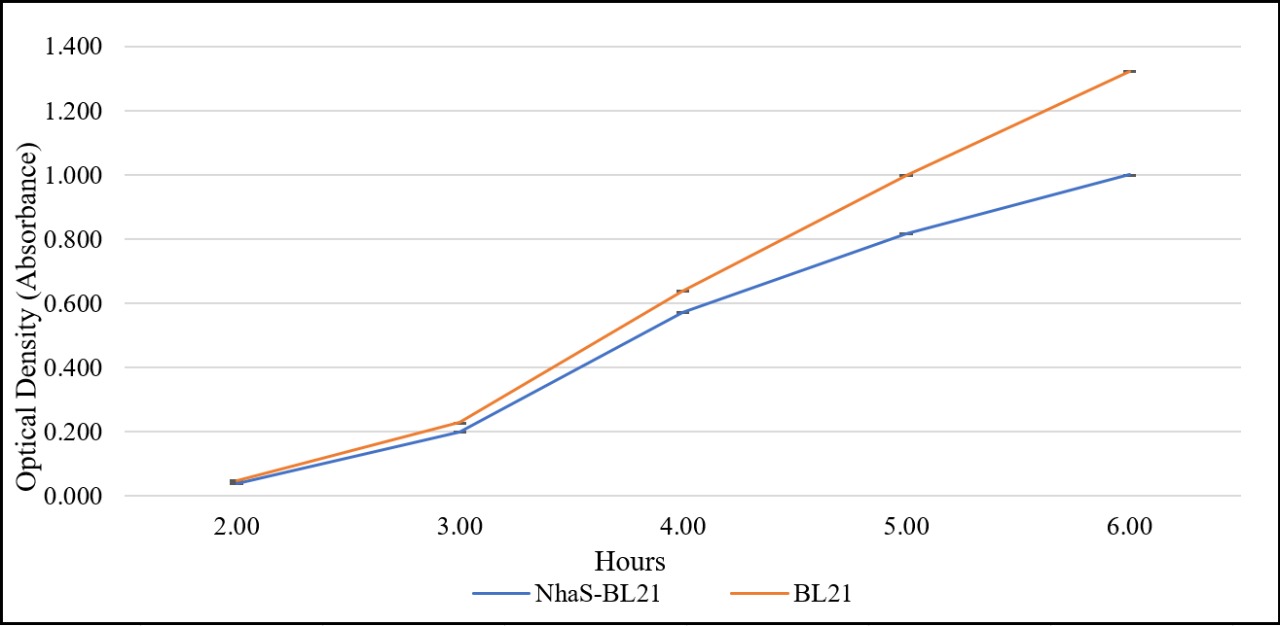Contents
CHARACTERIZATION
NhaS Part Improvement and Characterization
In 1994, Krulwich described a hypothetical gene he called nhaS, which codes for a protein called NhaS. Krulwich mentions that this protein could be located in the cell membrane of Bacillus pseudofirmus, a bacterium that normally lives in geysers, giving it the ability to survive in high salinity environments.
In 2014, the CIDEB High School iGEM team synthesized the nhaS gene in a chemical way and introduced it into E. Coli cells with a UV-activated promoter to test its resistance to saline environments. It was found that the transformed cells are capable of withstanding high concentrations of salinity in the medium in which they are found, since they managed to have a growth in media at concentrations of up to 15% NaCl.
In order to continue describing this piece, this BioBrick [<partinfo>K1255002</partinfo>] was used to evaluate the function of the NhaS protein by comparing salt consumption between a recombinant strain and a control without the BioBrick, using electro conductivity as an indirect indicator of sodium ions dissolved in the culture medium.
Experiment Description
In a flask with 100 mL of LB culture medium 1 mL of bacteria previously transformed with the nhaS gene and the constitutive promoter were inoculated and in a separate flask, the procedure was repeated with the strain of bacteria without the constitutive promoter. The flasks were placed under constant agitation at 180 rpm and at 37 ° C in the incubator. With the help of a micropipette, 2 mL of culture medium without bacteria was taken and placed in a spectrophotometer cell. The cell was placed in the spectrophotometer and measured me as a reference target to perform the respective optical density measurements of the bacterial cultures. Every 30 minutes and for 6 hours, samples were taken from both flasks using a micropipette, and 2 mL of the samples were placed in the measuring cells in front of a lighter. These samples were evaluated for optical density.
In a flask with 100 mL of LB culture medium, 1 mL of previously transformed bacteria was inoculated with it in Nhas and the constitutive promoter and in a separate flask, the procedure was repeated with the strain of unmodified bacteria. The flasks were placed under constant agitation at 180 rpm and at 37 ° C in the incubator. With the help of a micropipette, 1 mL of culture medium was taken and centrifuged for 1 min at 10,000 rpm. Subsequently, the supernatant was dissolved in 9 mL distilled water. These measurements were made every 30 minutes and for 6 hours, taking samples of both flasks using a micropipette, and facing a lighter. These samples were evaluated for electrolytic conductivity using a conductivity meter.
Results
Analysis and Discussion
It can be seen in Figure 1.0, where it is shown that the media of the bacteria without the synthetic construction (BL21) reach their logarithmic curve before the transformed bacteria, so that the optical density was taken as a dependent variable in the experiment. It is speculated that this behavior is due to the high metabolic demand on the constituve promoter fount in the NhaS modified bacteria that could mean having to produce two extra proteins in their systems: Nhas and RFP (Huang, 2010).
The conductivity between the media of the transformed bacteria and control bacteria (BL21) was measured. The data of the conductivity measurements observed in Figure 1.1 were subjected to a statistical analysis of a Student's t-test, where said test returned a p-value of 0.008 below the 0.05 alpha, so it can be said that the difference between the control and the samples can be considered statistically significant. Since the difference between these groups is the presence and absence of the nhaS gene, from this p-value this factor can be considered as the cause of increased consumption in the salt of the medium, as predicted by Krulwich in 1994. It can be concluded that the proteins of NhaS introduced sodium ions decreasing the conductivity of the mediums.
Conclusion
With these experiments it was possible to support that the NhaS piece is capable of synthesizing proteins and that they have the ability to significantly reduce the concentration of sodium ions in the medium in which they are found.
For future tests it is planned to be able to perform more experiments in relation to the absorption capacity of sodium ions that this protein provides.
Bibliography
- CIDEB-UANL_Mexico. (2012). Capture module Retrieved on April 24, 2018 from https://2014hs.igem.org/Team:CIDEB-UANL_Mexico/project_capture
- Water Advisory Council, A.C. (s.f.). Situation and context of the water problem in Mexico. Retrieved on April 24, 2018, from http: // www.aguas.org.mx/site/index.php/panorama-del-agua/diagnosticos-del-agua.


